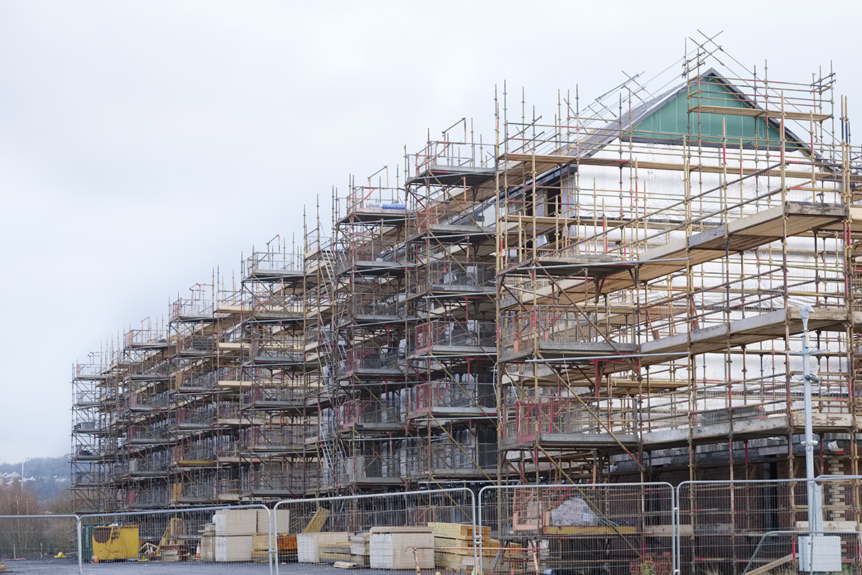With affordable housing demand consistently outpacing supply, this sector is positioned to remain robust well into the future, according to Richard Lara of RAAM Construction.
The COVID-19 pandemic has pervaded nearly every aspect of commercial real estate, including the multifamily sector. According to the Wall Street Journal, sudden wide-ranging unemployment due to government-mandated economic shutdowns resulted in almost a third of U.S. apartment dwellers not paying rent in April, which has in turn led to cash-flow concerns for multifamily landlords.
While the situation continues to evolve day by day, making it difficult to pinpoint the true impacts of COVID-19 on multifamily in the short and long term, the affordable housing construction and development sector does offer a bright spot in a sea of uncertainty. Fundamentals for affordable housing are consistently favorable, and there’s every indication that development of this product type will only increase in the current economic environment.
Here’s why:
AFFORDABLE HOUSING DEMAND HAS ALWAYS OUTPACED SUPPLY–EVEN NOW
There has consistently been a shortage of affordable housing units in markets throughout the country regardless of the economic climate, creating ongoing demand for this product type. If the recessionary environment that is pushing to the forefront prevails, the demand for affordable housing will only continue to increase.
High unemployment figures equal fewer breadwinners per household for many American families, meaning that more people will be seeking affordable housing as the market struggles to recover. Therefore, the need for affordable construction will only grow in the coming months and years.
CITIES ARE PLACING AN EMPHASIS ON AFFORDABLE DEVELOPMENT
The health and safety of our communities is of the utmost importance to cities, and ensuring people have housing is a key factor in that. During a pandemic, the negative impacts of homelessness and a lack of affordable housing are exacerbated by the public health risks of infection spreading among people on the streets, which is further driving demand for affordable housing.
Public-private partnerships have been instrumental in meeting this demand in recent years. To that end, municipalities in Los Angeles and across the country will increasingly seek out private development and construction companies to help fulfill the rising demand for affordable housing during this time of economic uncertainty, which will continue to drive affordable development nationwide.
Moreover, private general contracting firms who have experience partnering with developers and local governments on affordable housing projects, will be sought out for their ability to move these projects forward in a quality-focused, timely and cost-conscious manner.
RAAM is currently working on the construction of Arboleda Apartments, an affordable housing community in La Puente, Calif. This new development is an example of private and public partnerships coming together to deliver much-needed affordably priced housing to the community.
INVESTORS CONSIDER AFFORDABLE HOUSING A STABLE INVESTMENT
Affordable housing has historically performed well in times of economic uncertainty and in times of economic growth.
With the stock market demonstrating alarming volatility during the pandemic, investors will likely take a more defensive investment approach incorporating more stable investments like affordable housing in their portfolios. This will ultimately drive more capital to the sector, resulting in increased affordable development and construction.
Affordable housing also significantly differs from standard market-rate apartments that may be impacted in the current environment by resident defaults on rent. Many affordable housing properties are occupied by residents with Section 8 vouchers. Section 8 authorizes payment of rental housing assistance to private landlords of low-income households. This will likely result in fewer rental defaults in the affordable housing sector compared to market-rate units.
As the coronavirus pandemic and its economic aftermath play out in the multifamily sector, affordable housing development and construction stands out as a perennial shining star. With affordable housing demand consistently outpacing supply, public-private partnerships on the rise to develop this product type, and investors looking to diversify with a stable investment category, affordable housing construction is positioned to remain a robust segment of commercial real estate well into the future.
This article was written by Richard Lara and published by Multifamily Housing News . To see the original version of this story, please click HERE

